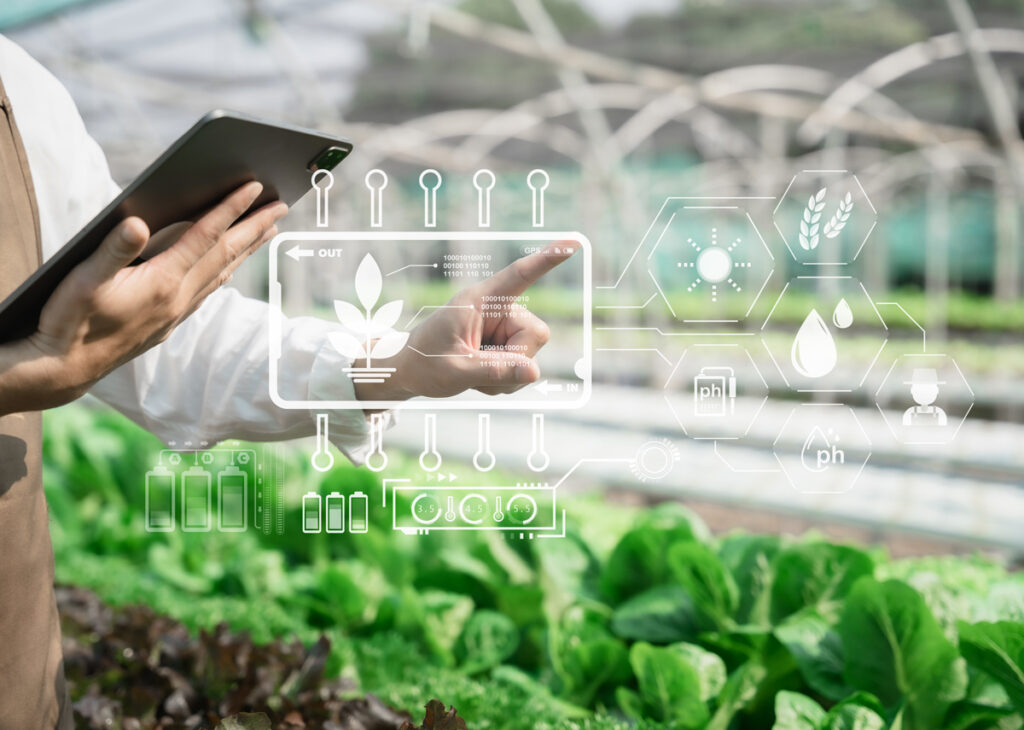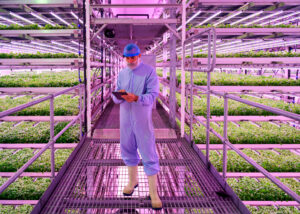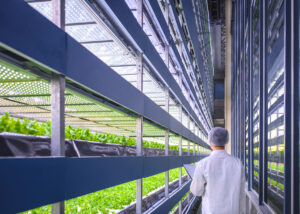What is Vertical Farming?
Vertical farming has revolutionised how we approach agriculture, offering a sustainable and space-efficient alternative to traditional farming methods. Vertical farming is the practice of growing crops in vertically stacked layers, utilising controlled environments to optimise growth conditions. But how did we get here, and what makes this innovative method so promising?
The History of Vertical Farming
While the concept of growing crops in stacked layers dates back to the 1990s, the roots of vertical farming can be traced much further. Farmers have long sought ways to maximise yields in limited space, drawing inspiration from historical techniques like step-over fruit trees and Ancient Roman grape cultivation methods. However, it wasn’t until recent decades that vertical farming gained momentum as a viable solution to address modern challenges in agriculture.
How Does Vertical Farming Work?
At the core of vertical farming is the controlled environment. Shallow trays stacked within buildings create a vertical farm, lit with LED lighting at each level. These farms may lack windows, and some even operate underground. Hydroponic and aeroponic systems are commonly employed, where water or water vapour infused with nutrients circulates directly around the plant roots. The absence of soil and precise control over environmental factors contribute to the efficiency of vertical farming.
The Benefits of Vertical Farming
Vertical farming offers many benefits, ranging from water and nutrient efficiency to reduced dependency on traditional farming resources. The controlled environment minimises the risk of pests and diseases, potentially eliminating the need for pesticides. The technology allows crops to thrive where conventional farming is impractical, such as in urban areas or outer space. With shorter supply chains, vertical farming enhances food security and quality by minimising nutrient deterioration and reducing food miles.
Can Vertical Farms Feed the World?
While the technology shows great promise, challenges persist. The high costs in terms of money and energy limit the range of commercially available produce. Leafy salads, small vegetables, and high-value crops are currently the mainstay of vertical farms due to their quick life cycles. The question remains: Can vertical farms evolve to feed the world sustainably? Overcoming challenges related to cost, energy use, and the variety of crops grown will be crucial in determining the answer.
Vertical Agriculture with GelPonics
Innovative technologies like GelPonics are gaining attention in the realm of vertical farming. These systems enhance water and nutrient efficiency, pushing the boundaries of what can be achieved in controlled environment agriculture. GelPonics, a novel approach to nutrient delivery, exemplifies the constant innovation driving the vertical farming industry forward.
The Future of Indoor Vertical Farming
As we explore the future of agriculture, indoor vertical farming stands at the forefront of innovation. The co-location of farms within urban environments provides numerous benefits, from reducing transportation-related emissions to fostering a closer connection between consumers and their food sources. With advancements in LED bulbs, artificial lighting, and research on new crop varieties, the potential for indoor vertical farming to shape the future of global food production is becoming increasingly evident.
In conclusion, controlled environment agriculture, particularly vertical farming, represents a promising path toward a more sustainable and efficient future for food production. As technology continues to evolve and researchers delve into new possibilities, the day when vertical farms play a pivotal role in feeding the world might be closer than we think.
About GelPonics
GelPonics emerges as a trailblazer in the realm of controlled environment agriculture, offering cutting-edge technology designed to maximise water and nutrient efficiency in vertical farming systems. As a leader in innovative nutrient delivery systems, GelPonics specialises in providing sustainable solutions that contribute to the success of indoor farming. Don’t hesitate to contact us at info@aehinnovativehydrogel.com for personalised assistance or to learn more about optimising your vertical farm with GelPonics.
Elevate your agriculture game with GelPonics, shaping the future of controlled environment farming.


